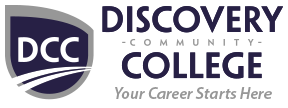
Microsoft Office Suite’s Excel program is today’s premier spreadsheet computer application. The program has been the industry standard for over three decades and remains one of the most advanced tools for formatting, manipulating, and organizing raw data.
Students of computerized business school are educated in how to effectively manage files, information, and correspondences in a modern, computer-based office setting. The skills learned under the program’s curriculum prepare graduates for work in office administrative positions. One of the skills these professionals learn is how to adeptly use Excel spreadsheets. Read on for a few tips on how to make the most out of the program.
Key shortcuts Will Render Your Workflow More Efficient
There are several keyboard shortcuts professionals can use while using Excel that will make their workflow faster, smoother, and more efficient. It can be tedious to constantly switch between the mouse and keyboard to complete actions on the spreadsheet, and these shortcuts will make you more effective in the office.

CTRL and SHIFT can be used together to select entire rows and columns. Users should click on the first cell they want to select, hold down these two buttons, and then use the arrow keys to select the data above, below, or to the sides. CTRL, SHIFT, and asterisk, when used together, will select the entire data set. Use CTRL and the enter key to fill data into all the cells. CTRL and the semi-colon will insert today’s date, while CTRL, SHIFT, and the colon will insert the current time.
Vertical Lookup Makes Data Location Faster
Excel’s vertical lookup feature, also referred to as “VLOOKUP”, is a convenient way that graduates of computer business applications training can quickly find data associated with a certain value. However, the feature doesn’t work until it’s first set up for use.
To set up the VLOOKUP feature, users should first click on the cell where they want the formula to be calculated. Then, they should click “formula” at the top of the screen, open the “lookup & reference” dropdown menu, then click “VLOOKUP”. In the dialogue box, users should specify the cell and data they want to be used in the search. Then, specify the column number where it should look, and whether an exact or approximate match is needed by typing FALSE or TRUE, respectively.
Graduates of Computerized Business School Can Back Up Files Automatically
Opening a file only to realize that on the last edit an accidental deletion or change had been made is not a fun experience. It can be frustrating to have to rework a spreadsheet because of an alteration that you can’t CTRL + Z to undo. Luckily, Excel has an easy way to avoid these annoyances.
Graduates of the computerized business program can configure Excel to automatically save a previous version of a spreadsheet. AutoBackup is a feature that makes a copy when the spreadsheet is first saved. The backup copy is always updated so it’s up to date and one version behind the original. To activate this feature, go to “file”, then “save as”, then click on “more options”. In the “tools” dropdown menu, go to general options, and check the “always create backup” box.
Become an Excel Expert by Learning to AutoFill Repetitive Patterns
Manually typing out a series of repetitive information in a column can be time-consuming and tedious. Excel conveniently has a function that will autofill columns for you when recording patterns of basic information, such as dates or times of day. This is a helpful feature that’s nonetheless commonly overlooked.

To use AutoFill, begin typing out the series in the column. Then, take the cursor and click the lower-right side of the last filled cell in the column. Drag down to cover all the cells you would like to fill. They’ll automatically fill using the pattern you started. Even without filling out the beginning of the pattern, you can still activate AutoFill. Select all the cells you’d like to fill, and you’ll get a menu of options. Select “fill series” to fill the pattern in.
Do you want to start working towards your computer business applications certificate ?
Contact Discovery Community College for more information to enroll in Campbell River, Nanaimo, or Surrey!

